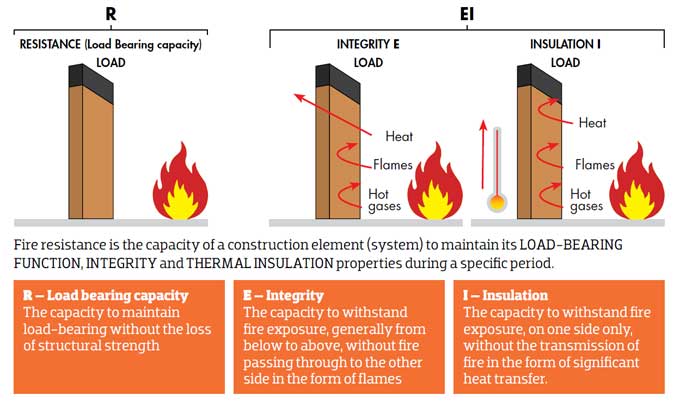
An Overview of Fire Resistance Rating in Construction

Passive fire protection systems and materials must be able to withstand standard fire resistance tests in order to be considered fire resistant.
Fire resistance Rating (FRR) refers to a construction material or assembly's ability to withstand a standard fire exposure for a specified period of time, in minutes or hours.
Fire Resistant Rating Features
The fire resistance of a material or assembly is measured by its FRR. To determine it, a standardized fire test and calculation are used. Additionally, a fire rating level (FRL) is determined by the test result obtained after testing fire resistance.
1. Even though FRR and FRL are interchangeable terms, FRR is the value that a fire design engineer sets for fire resistance.
2. A test value is the result obtained after a test has been conducted, while the former is the actual test value.
3. Regulation determines the FRR of construction materials and systems. Test samples are rigorously tested under controlled conditions to determine the FRR. Building environments may differ from these exposure conditions.
4. For structural adequacy tests, the material is tested for its ability to withstand loads throughout.
5. When a material catches fire, it must remain intact without cracks or fissures.
6. A material's insulation ability is determined by how well it slows the spread of heat.
Importance of Fire Resistant Construction
There is no doubt that firefighters and anyone in the construction industry need to have a basic understanding of construction types. Moreover, knowing the types of construction saves lives by helping firefighters anticipate dangerous situations such as flashovers and collapse.
As a construction worker, you must understand a building's resilience to fire, earthquakes, and hurricanes. It is just as crucial for workers to prepare for accidents during construction as it is for them to understand how their work contributes to the future safety of the building they will be working on.
Key Measurement
Fire assemblies are placed in a propane gas furnace, and the temperature is increased over time according to predetermined criteria to establish fire resistance ratings. The Standard Time Temperature Curve represents this relationship between time and temperature.
Materials and structures are rated according to how long they take to fail during a fire. When the element fails, it is measured from that point. A stage at which an element is essentially destroyed does not necessarily imply that it has been destroyed.
1. Results of the product's FRL or test.
2. Elements are constructed from different kinds of materials.
3. As a result of a fire incident, the location and proximity of the element to other building elements. A floor, roof, column, wall, or beam can be an example.
4. Noncombustible components are present near the building element.
Materials and structures are rated according to how long they take to fail during a fire. When the element fails, it is measured from that point. A stage at which an element is essentially destroyed does not necessarily imply that it has been destroyed.
Wrapping it Up
There are a large number of buildings that look similar at first glance, but the underlying materials play a significant role in their cost and durability, especially in the case of an emergency.
To learn more, watch the following video tutorial.
Video Source: Amazing Engineering | ACES
There has been a considerable increase in the strength and cost of building some modern buildings.
The problem is that manufactured materials like engineered lumber and synthetic plastics are easy to burn, which can lead to fast collapses and additional hazards for firefighters in a fire.


